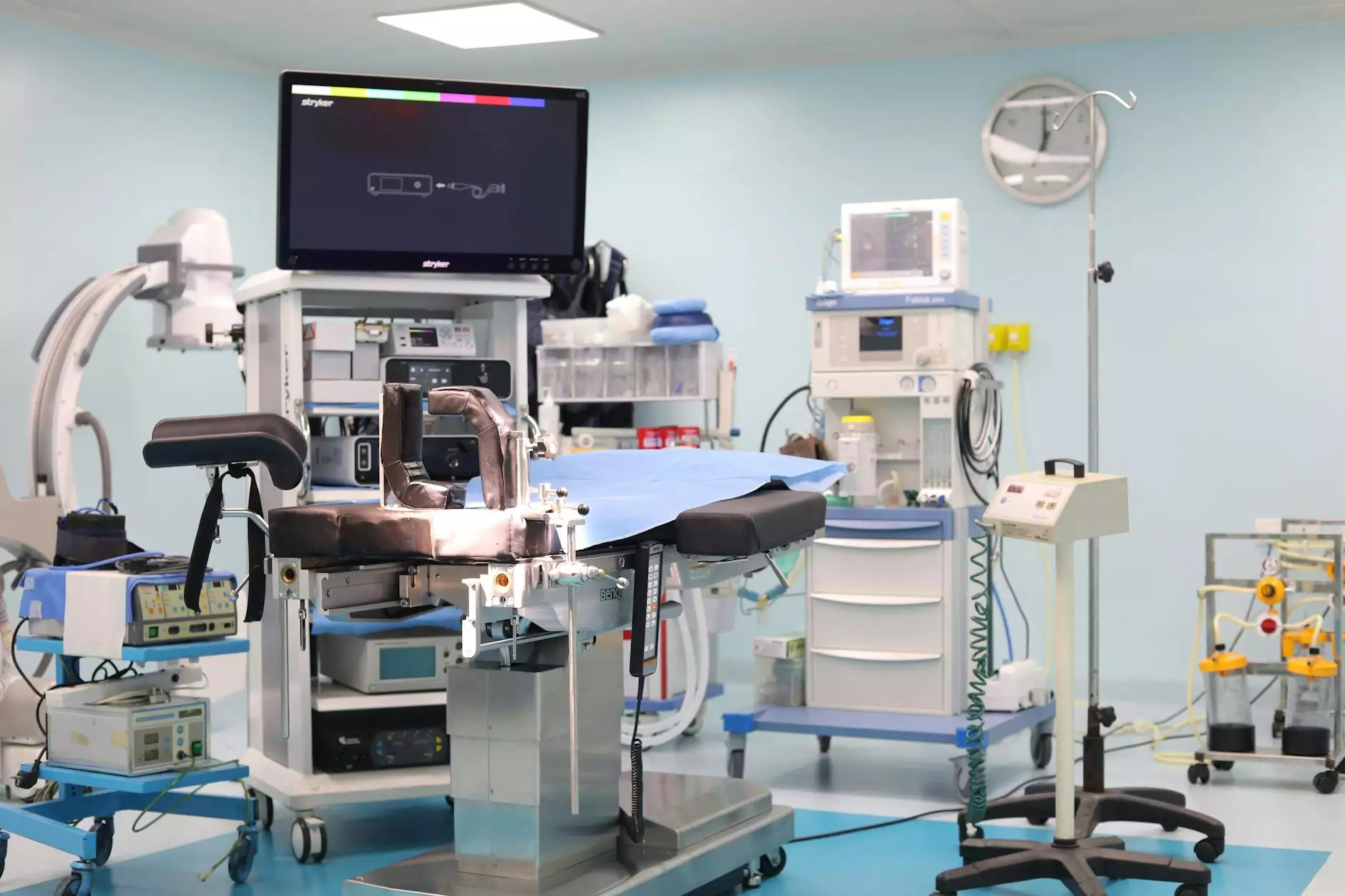Understanding the Surgical Procedure for Hysterectomy

The surgical procedure for hysterectomy is a significant medical intervention that can profoundly impact a woman's health and well-being. In this article, we will delve deep into what a hysterectomy entails, the different types of hysterectomies, the reasons one might need this surgery, the benefits and risks, and what to expect during recovery. Our goal is to provide comprehensive and detailed information to empower you with knowledge about this important procedure.
What is a Hysterectomy?
A hysterectomy is a surgical operation that involves the removal of a woman's uterus. Depending on the underlying reason for the surgery, the procedure can also involve the removal of the cervix, ovaries, and fallopian tubes. This operation can be performed through various methods, including abdominal, vaginal, and laparoscopic techniques.
Why is a Hysterectomy Performed?
Hysterectomies are often recommended for various medical conditions, including:
- Fibroids: Noncancerous growths in the uterus that can cause heavy bleeding and pain.
- Endometriosis: A disorder in which tissue similar to the lining of the uterus grows outside the uterus.
- Uterine Prolapse: A condition where the uterus drops into the vaginal canal due to weakened pelvic muscles.
- Chronic Pelvic Pain: Ongoing pain that may arise from various conditions affecting the uterus.
- Gynecological Cancer: Cancer affecting the uterus, cervix, or ovaries.
Types of Hysterectomy
There are several types of hysterectomy procedures, and the choice depends on the patient's medical condition and overall health. The main types include:
1. Total Hysterectomy
This procedure involves the removal of the entire uterus along with the cervix. It is often performed for serious medical conditions such as cancer or severe endometriosis.
2. Subtotal (or Partial) Hysterectomy
A subtotal hysterectomy removes the upper part of the uterus while leaving the cervix intact. This may be done for benign conditions like fibroids.
3. Radical Hysterectomy
This extensive surgery involves the removal of the uterus, cervix, surrounding tissues, and possibly some part of the vagina. It is typically done in cases of cancer.
4. Laparoscopic Hysterectomy
This minimally invasive technique uses small incisions and a camera for visualization, reducing recovery time and discomfort.
5. Vaginal Hysterectomy
This method entails the removal of the uterus through the vaginal canal, which can lead to a shorter recovery time compared to abdominal approaches.
Benefits of a Hysterectomy
Women may choose to undergo a hysterectomy for various reasons, including:
- Relief from Symptoms: Many women experience significant relief from symptoms such as heavy bleeding, severe cramping, or chronic pain after the procedure.
- Improved Quality of Life: After recovery, women often report an improved quality of life, free from debilitating symptoms associated with their previous condition.
- Reduced Risk of Certain Cancers: For women at high risk for reproductive cancers, a hysterectomy can greatly decrease that risk.
Risks Associated With Hysterectomy
Despite its benefits, a surgical procedure for hysterectomy is not without risks. Potential complications include:
- Infection: As with any surgery, there is a risk of infection in the surgical site.
- Bleeding: Some women may experience excessive bleeding during or after the procedure.
- Damage to Nearby Organs: There is a possibility of accidental injury to surrounding organs, such as the bladder or intestines.
- Hormonal Changes: If ovaries are removed, women may enter menopause abruptly, leading to hormonal imbalances.
- Emotional Impact: The physical and emotional ramifications of a hysterectomy can be profound and may require psychological support.
Preparation for Surgery
Proper preparation is crucial for a successful surgical procedure for hysterectomy. Here are the steps typically involved:
- Consultation With Your Doctor: Discuss your medical history, current medications, and any pre-existing health conditions.
- Diagnostic Tests: Your physician may recommend various tests, including blood tests, ultrasounds, or imaging studies to assess your situation.
- Plan for Recovery: Arrange for help at home post-surgery, as you may require assistance during your initial recovery period.
- Understand the Procedure: Educate yourself on what to expect during and after the surgery to alleviate anxiety.
The Day of the Surgery
On the day of the surgery, here’s what you can expect:
- Arrival: Arrive at the surgical facility as instructed, usually a few hours prior to the operation.
- Pre-Operative Instructions: You may need to change into a surgical gown and may receive medications to help you relax.
- Anesthesia: You will be given anesthesia to ensure you are comfortable and pain-free during the procedure.
- The Procedure: The surgical team will perform the hysterectomy, which can take 1 to 3 hours depending on the complexity of the case.
Post-Surgery Recovery
After the surgical procedure for hysterectomy, recovery is vital for healing and regaining strength. Here’s what to expect:
- Hospital Stay: Most patients stay in the hospital for 1 to 2 days post-surgery, although this can vary based on individual circumstances.
- Pain Management: Expect some pain or discomfort; your doctor will prescribe medications to manage it.
- Follow-Up Appointments: These are crucial to monitor your healing and address any concerns.
- Gradual Return to Activities: Rest and take it easy, gradually returning to your daily activities as advised by your doctor.
Conclusion
In conclusion, understanding the surgical procedure for hysterectomy is essential for making informed health decisions. Whether you are facing a hysterectomy due to fibroids, endometriosis, or other gynecological conditions, the insights shared in this article aim to equip you with knowledge about the procedure, types, benefits, risks, and recovery process. For personalized advice and treatment, consult with healthcare professionals specializing in obstetrics and gynecology, such as those at drseckin.com. Your health is your wealth, and ensuring you have the right information is the first step toward a healthier future.



